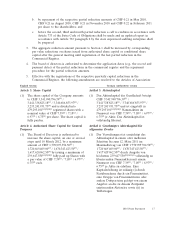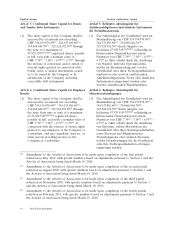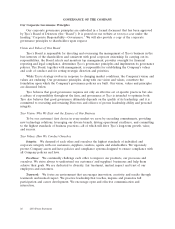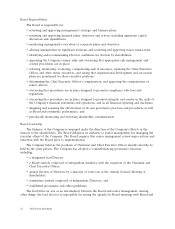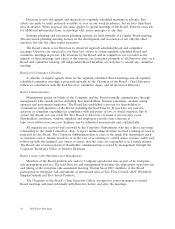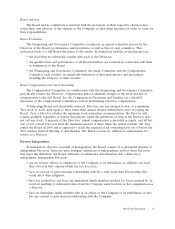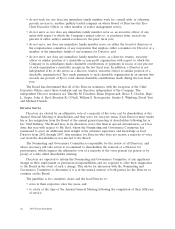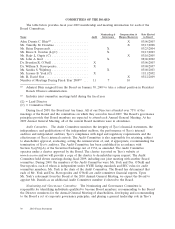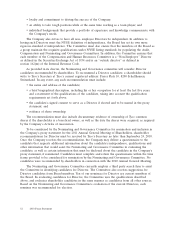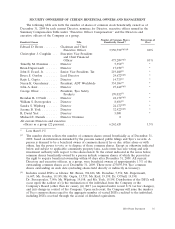ADT 2009 Annual Report Download - page 47
Download and view the complete annual report
Please find page 47 of the 2009 ADT annual report below. You can navigate through the pages in the report by either clicking on the pages listed below, or by using the keyword search tool below to find specific information within the annual report.The Board may choose to override these guiding principles in special circumstances or if it
otherwise believes it is appropriate to do so.
When the Chairman of the Board / Chief Executive Officer steps down, he or she must
simultaneously resign from the Board, unless the Board decides that his or her services as a Director
are in the best interests of the Company. It is only in unusual circumstances that the Board decides
that the retired Chief Executive Officer should continue to serve as Chairman.
Director Orientation and Education
A formal orientation program is provided to new Directors by the Corporate Secretary on Tyco’s
mission, values, governance, compliance and business operations. In addition, a program of continuing
education is annually provided to incumbent Directors, and it includes review of the Company’s Guide
to Ethical Conduct. Directors are also encouraged to take advantage of outside continuing education
relating to their duties as a Director and to subscribe to appropriate publications at the Company’s
expense.
Other Directorships, Conflicts and Related Party Transactions
In order to provide sufficient time for informed participation in their board responsibilities:
• non-executive Directors who are employed as chief executive officer of a publicly traded
company are required to limit their external directorships of other public companies to two;
• non-executive Directors who are otherwise fully employed are required to limit their external
directorships of other public companies to three; and
• non-executive Directors who are not fully employed are required to limit their external
directorships of other public companies to five.
The Board may, in its discretion, waive these limits in special circumstances. When a Director, the
Chief Executive Officer or other senior managers intend to serve on another board, the Nominating
and Governance Committee is required to be notified. The Committee reviews the possibility of
conflicts of interest or time constraints and must approve the officer’s or Director’s appointment to the
outside board. Each Director is required to notify the chair of the Nominating and Governance
Committee of any conflicts. The Chief Executive Officer may serve on no more than two other public
company boards.
The company has a formal, written procedure intended to ensure compliance with the related
party provisions in our Guide to Ethical Conduct and with our corporate governance principles. For the
purpose of the policy, a ‘‘related party transaction’’ is a transaction in which we participate and in
which any related party has a direct or indirect material interest, other than ordinary course,
arms-length transactions of less than 1% of the revenue of the counterparty. Transactions exceeding the
1% threshold, and any transaction involving consulting, financial advisory, legal or accounting services
that could impair a Director’s independence, must be approved by our Nominating and Corporate
Governance Committee. Any related party transaction in which an executive officer or a Director has a
personal interest, or which could present a possible conflict under the Guide to Ethical Conduct, must
be approved by a majority of disinterested directors, following appropriate disclosure of all material
aspects of the transaction.
Under the rules of the Securities and Exchange Commission, public issuers such as the Company
must disclose certain ‘‘related person transactions.’’ These are transactions in which the Company is a
participant where the amount involved exceeds $120,000, and a Director, executive officer or holder of
more than 5% of our common stock has a direct or indirect material interest. Although the Company
engaged in commercial transactions in the normal course of business with companies where the
Company’s Directors were employed and served as officers, none of these transaction exceeded 1% of
the Company’s gross revenues and these transactions are not considered to be related party
transactions.
2010 Proxy Statement 27


